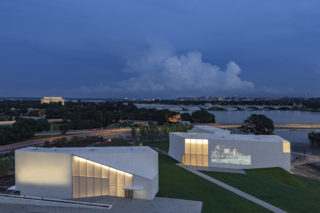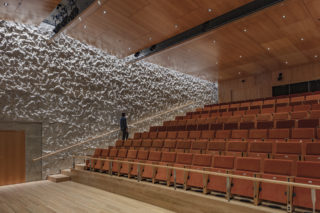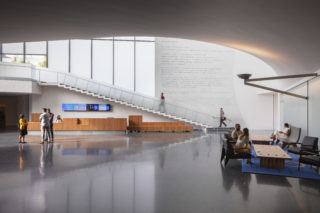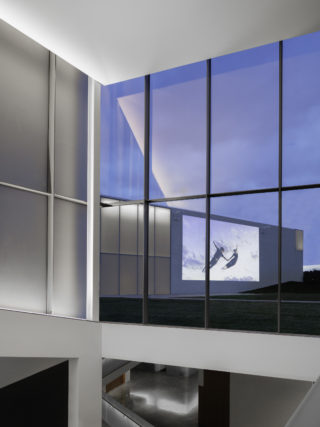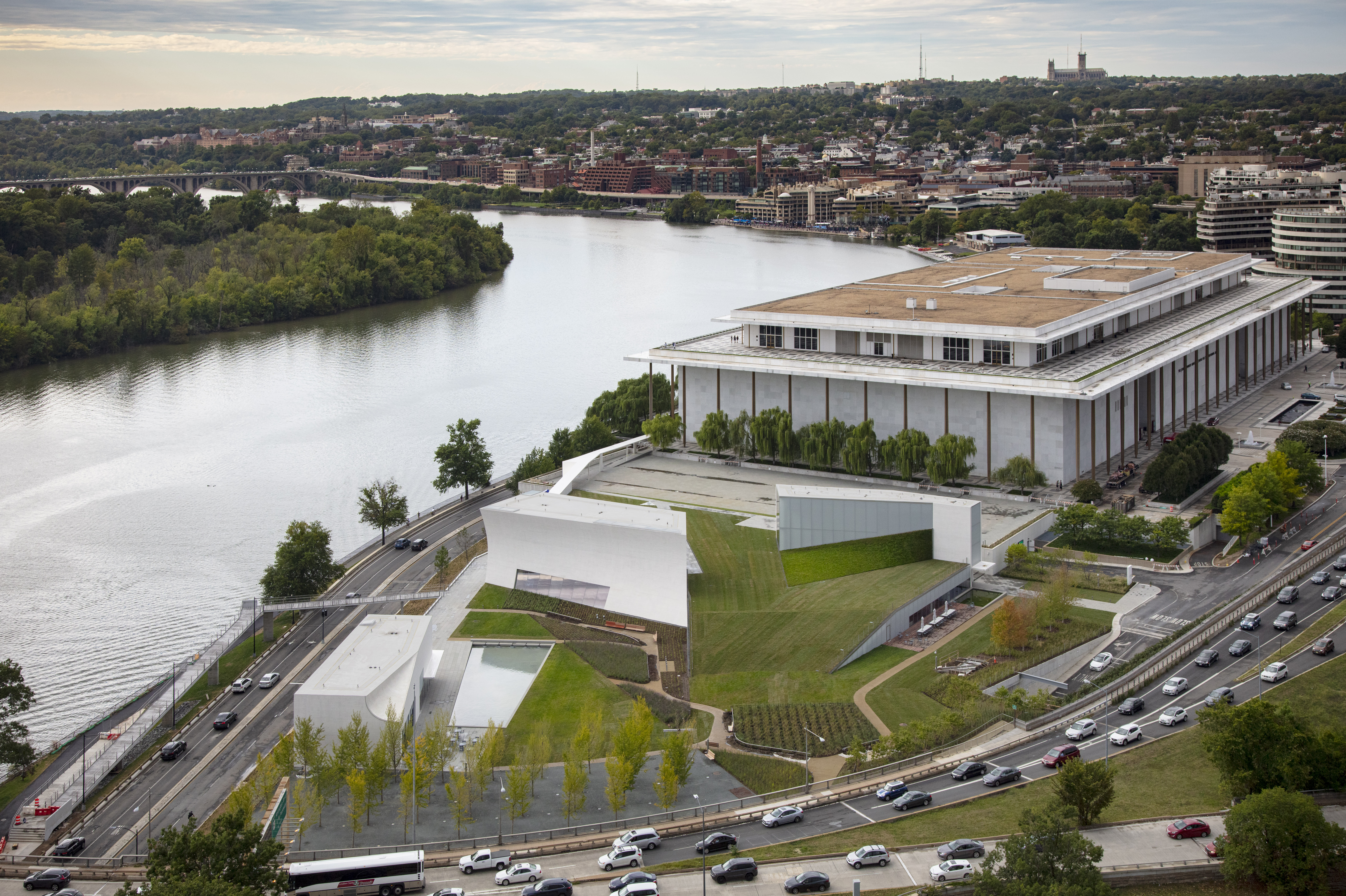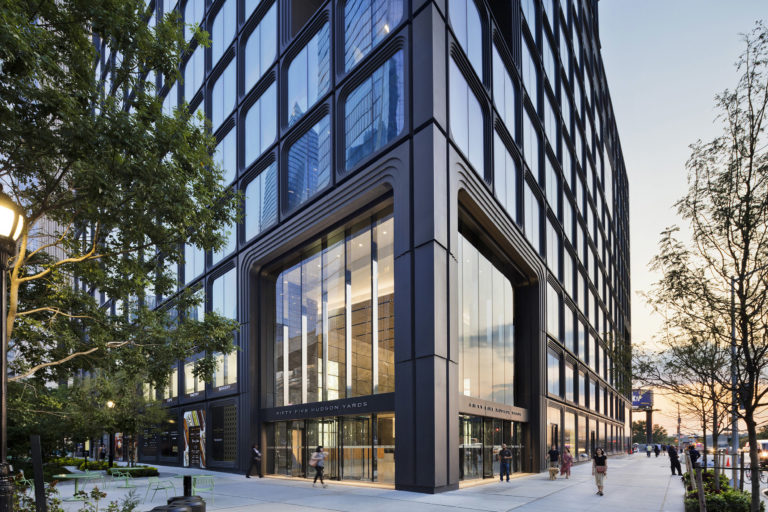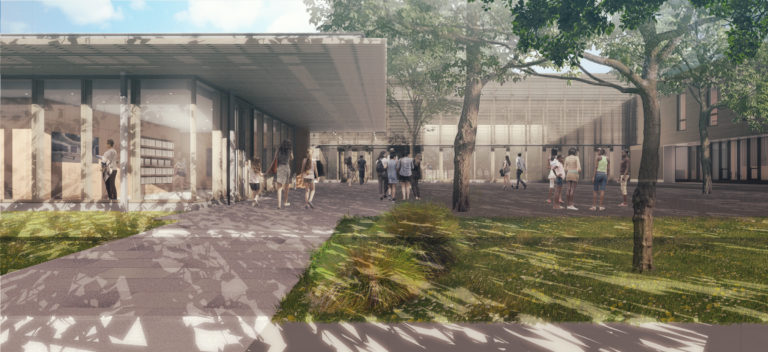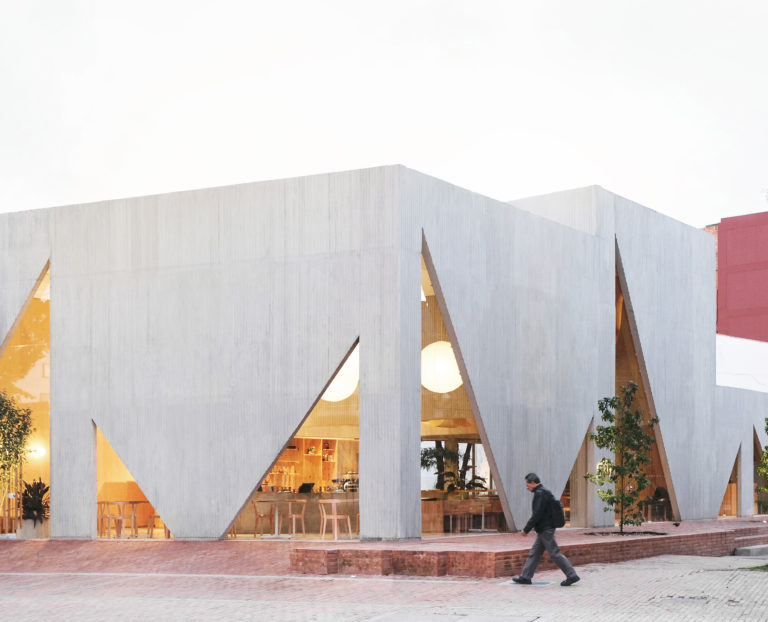The design for the The REACH merges architecture with the landscape to expand the dimensions of a living memorial. Standing in complementary/contrast to the monumental original building by Edward Durell Stone, The REACH’s three pavilions are fused with the landscape, shaping outdoor spaces between them to provide public green space, and framing views to the Washington Monument, Lincoln Memorial and Potomac riverfront. The landscape design includes a narrative reflection on the life of President Kennedy: a grove of 35 gingko trees acknowledges John F. Kennedy’s position as 35th President of the United States; and a reflecting pool and mahogany landscape deck are built in the same dimensions and mahogany boards of Kennedy’s WWII boat, the PT109. While all different in form, resisting any defined geometric description, the three pavilions are connected through their ruled-surface geometry. This strategy creates a language of forms, from conical sections to hyperbolic paraboloids, a visual acoustics echoing across the pavilions, cupping space between them, and dispersing sound on the inside. The titanium white board-formed concrete pavilions engage with the landscape, gently curving to catch natural light for the interior. Natural light is given to all spaces via translucent, clear and curved glass. Through etching the glass, and sandwiching translucent white films between layers, luminous surfaces diffuse light deep into the interior, and glow outward at night. Windows are positioned to provide views through the full depth of the interior encouraging creative curiosity and dynamic interaction.
Project facts
Location Washington, DC
Architect Steven Holl Architects
Architect of Record BNIM
Landscape Architects Hollander Design Landscape Architects
Year 2019
Project Team Langan; Silman; Vertran; Transsolar; Harvey Marshall Berling Associates; Thornton Tomasetti
Category Cultural
AIANY Recognition
2020 AIANY Design Awards








